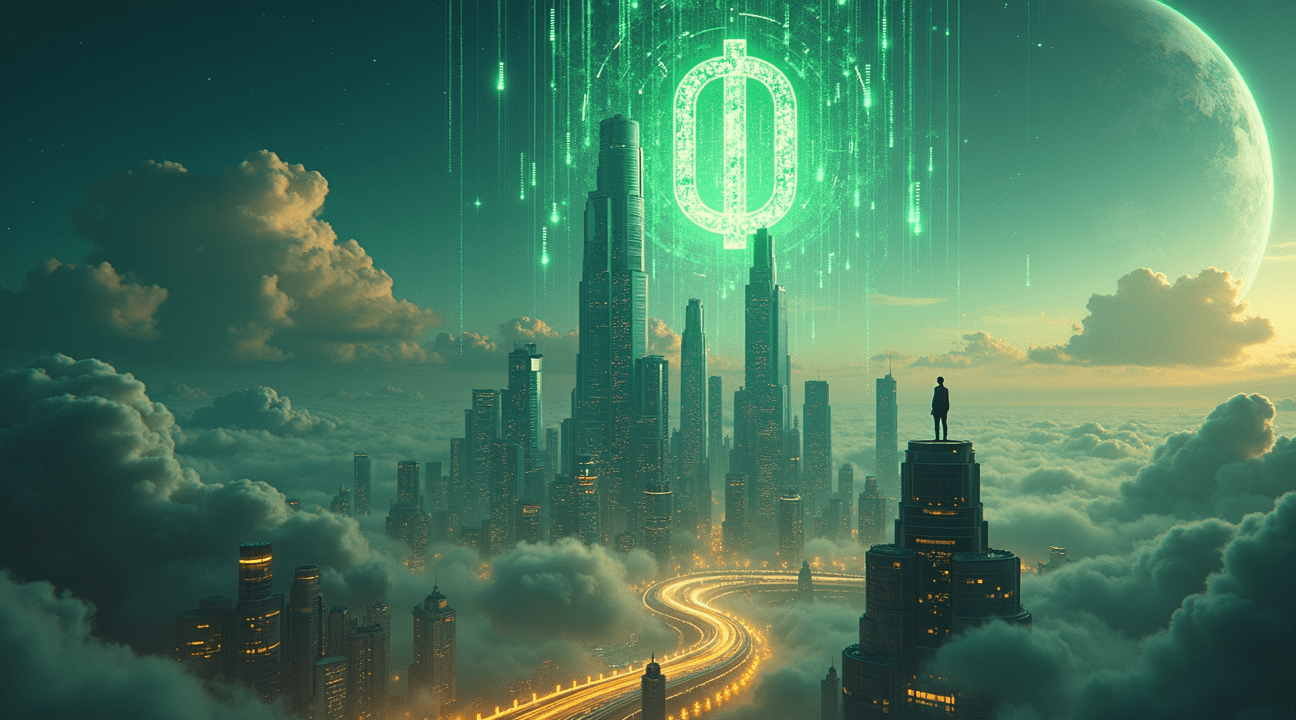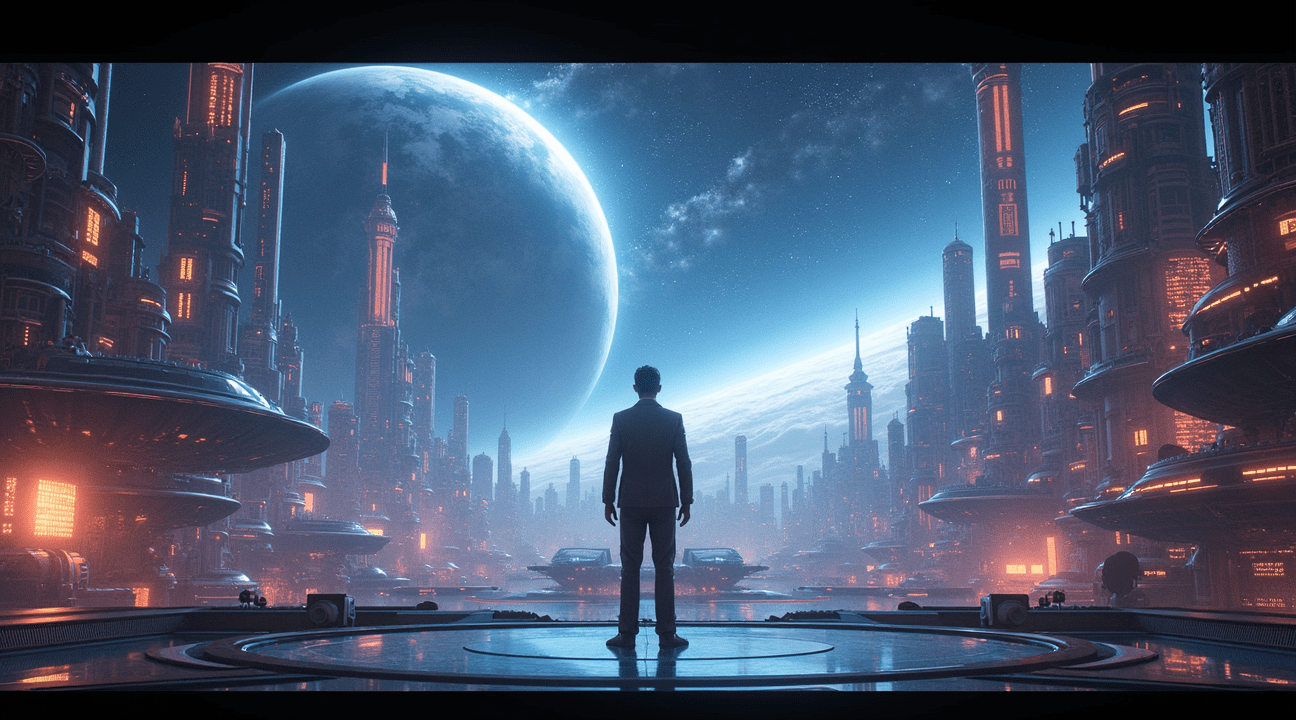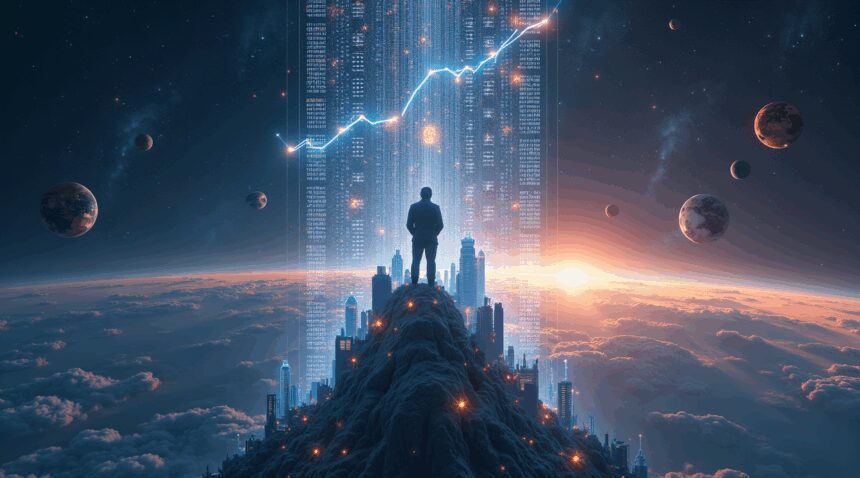No one has ever reached quadrillionaire status, as this theoretical wealth level of one quadrillion dollars represents an astronomical amount that exceeds the combined GDP of entire continents and would require ownership of assets valued far beyond current global market capabilities.
Today’s wealthiest billionaires, including Elon Musk with $328.5 billion and Jeff Bezos with $234 billion, possess fortunes that represent less than one percent of the wealth required to reach quadrillionaire status.
Key Takeaways
- Mathematical impossibility under current systems – A quadrillion dollars equals approximately 10 times the global annual GDP of $105 trillion, making such wealth accumulation practically impossible within existing economic structures.
- Massive gap between current wealth and quadrillionaire status – Even the richest person would need to increase their fortune by more than 3,000 times to reach quadrillionaire level, demonstrating the enormous scale difference.
- Over 3,000 billionaires collectively control $16.1 trillion globally – Despite this unprecedented concentration of wealth among the ultra-rich, their combined fortunes still fall far short of what a single quadrillionaire would possess.
- Market and regulatory barriers prevent extreme accumulation – Natural economic forces including market corrections, taxation systems, and competitive pressures historically limit wealth concentration before reaching astronomical levels.
- Future quadrillionaire emergence remains highly speculative – While economic expansion, inflation, or revolutionary new asset classes could theoretically create pathways to such wealth, these scenarios would require fundamental changes to global economic systems that appear unlikely under current trajectories.
For further insight into the current wealth rankings, readers can explore the latest data from Forbes Real-Time Billionaires list.
No Individual Has Ever Reached Quadrillionaire Status
The concept of a quadrillionaire represents wealth so massive that it remains purely theoretical in today’s financial landscape. A quadrillionaire is defined as an individual whose net worth exceeds one quadrillion dollars (1,000,000,000,000,000 USD), a figure so astronomical that it dwarfs even the most substantial fortunes ever accumulated. To put this into perspective, one quadrillion dollars equals 1,000 times the wealth of a trillionaire, who themselves would possess 1,000 times more than a billionaire.
Current wealth distribution reveals just how far humanity stands from producing a quadrillionaire. The world’s wealthiest individuals remain billionaires, with their fortunes typically ranging from hundreds of billions to just over 200 billion dollars. These figures, while staggering by most standards, represent less than one percent of the wealth required to achieve quadrillionaire status.
The Financial Reality of Extreme Wealth
Even the most optimistic projections about wealth accumulation fail to support the possibility of quadrillionaire emergence in the foreseeable future. Elon Musk’s acquisition of major companies demonstrates how billionaires deploy their wealth, yet such activities still operate within the billions rather than approaching trillionaire territory. The global economy simply doesn’t contain mechanisms that would allow individual wealth to compound to quadrillionaire levels under current economic structures.
Financial experts consistently point to several limiting factors that make quadrillionaire status virtually impossible:
- Market capitalization of even the largest companies rarely approaches the scale necessary to support such wealth concentration
- Regulatory frameworks and taxation systems diminish extreme wealth accumulation
- Natural economic cycles and corrections prevent indefinite exponential wealth growth
Global equity markets would need to experience unprecedented growth patterns sustained over generations to support such wealth levels.
Comparing Current Wealth Levels
Understanding the gap between current billionaire status and theoretical quadrillionaire wealth helps illustrate why no individual has achieved this level. Consider these key comparisons:
- A quadrillion dollars equals approximately 5,000 times the net worth of the world’s richest person
- This amount exceeds the GDP of most countries by massive margins
- The total market capitalization of all publicly traded companies globally falls short of one quadrillion dollars
- Billionaire philanthropic activities demonstrate how even massive fortunes get distributed rather than infinitely accumulated
The mathematical impossibility becomes clearer when examining wealth growth trajectories. Billionaire status typically requires decades of strategic investment and business development. Scaling that same growth pattern to reach quadrillionaire levels would require centuries of sustained, exponential wealth increase without any market corrections, economic downturns, or wealth redistribution events.
Technology and innovation continue driving wealth creation, yet even the most successful entrepreneurs and investors operate within practical limits. Major acquisitions involving tens of billions of dollars represent significant wealth deployment rather than indefinite accumulation. These transactions actually demonstrate how wealth moves through the economy rather than concentrating in single individuals.
The absence of trillionaires further emphasizes how distant quadrillionaire status remains. While some projections suggest the first trillionaire might emerge within the next few decades, reaching that milestone would still leave an individual 999 trillion dollars away from quadrillionaire status. This gap represents wealth equivalent to the combined net worth of thousands of billionaires.
Quadrillionaires remain a fascinating theoretical concept that highlights the extreme end of potential wealth concentration. However, current economic realities, market structures, and wealth distribution patterns make achieving quadrillionaire status practically impossible under existing systems. The world’s richest individuals continue operating in the billionaire range, with trillionaire status representing the next theoretical milestone that itself remains unachieved.
https://www.youtube.com/watch?v=HngdEN0xM4Q

Today’s Richest Billionaires Are Nowhere Close to Trillionaire Status
The Current Wealth Leaders and Their Distance from Trillionaire Territory
The financial elite continues to accumulate unprecedented wealth, yet even the richest individuals on Earth remain far from crossing the mythical trillion-dollar threshold. Elon Musk currently holds the title of world’s wealthiest person with a net worth of $328.5 billion as of March 2025. His fortune stems primarily from his stakes in Tesla and SpaceX, though Elon Musk’s acquisition of Twitter has also contributed to his business empire.
Jeff Bezos maintains his position as the second-richest individual globally, with a fortune valued at $234 billion. Amazon’s continued dominance in e-commerce and cloud computing services has kept Bezos near the top of wealth rankings for years. Mark Zuckerberg secures third place among the ultra-wealthy, benefiting from Meta’s investments in virtual reality and social media platforms.
The representation of women among the ultra-wealthy remains limited, with only Alice Walton and Francoise Bettencourt Meyers appearing in the global top 20 richest individuals.
- Walton’s wealth derives from her inheritance of Walmart stock
- Bettencourt Meyers controls the L’Oréal cosmetics empire
Their presence highlights both the concentration of wealth and the gender disparities within elite financial circles.
Despite these staggering fortunes, the gap between current billionaire wealth and trillionaire status remains enormous. Even Musk, with his record-breaking net worth, would need to more than triple his current fortune to reach one trillion dollars. This mathematical reality demonstrates how extraordinary the leap from hundreds of billions to a full trillion actually is.
Recent years have shown that while billionaire businessman donations occur regularly, accumulating wealth at the pace required for trillionaire status proves challenging. Market volatility, regulatory changes, and economic cycles all influence these massive fortunes. Stock prices can fluctuate dramatically, causing billionaire net worth calculations to swing by tens of billions within short periods.
The concentration of wealth among this small group reflects broader economic trends, where technological innovation and business scaling create opportunities for extraordinary wealth accumulation.
However, reaching trillionaire status would require:
- Sustained growth across multiple business ventures
- Favorable market conditions over extended periods
- Continued expansion of digital economies and emerging technologies
Even with these factors in place, no individual has demonstrated the consistent wealth trajectory necessary to breach the trillion-dollar barrier in the foreseeable future.
This analysis reveals that while today’s billionaires possess unprecedented fortunes, the trillionaire milestone remains a distant goal rather than an immediate possibility.
Over 3,000 Billionaires Control $16.1 Trillion Globally
I’ve observed an unprecedented concentration of wealth at the very top of the global economic pyramid. Over 3,000 billionaires worldwide now control approximately $16.1 trillion in collective wealth as of 2025, representing a staggering accumulation of resources in relatively few hands.
Geographic Distribution of Billionaire Wealth
The distribution of these ultra-wealthy individuals reveals significant geographic patterns that illuminate global economic power centers. About 73% of billionaires concentrate in just nine countries, demonstrating how wealth clusters in specific regions with favorable economic conditions.
The United States dominates this exclusive group with 902 billionaires commanding a combined net worth of $6.8 trillion. This figure represents more than 40% of all global billionaire wealth concentrated in a single nation. China follows as the second-largest hub with 516 billionaires, reflecting its rapid economic transformation over recent decades.
India has emerged as another significant player with 205 billionaires, showcasing the country’s growing economic influence and entrepreneurial ecosystem. Germany maintains its position as Europe’s billionaire capital with 171 ultra-wealthy individuals, while Russia rounds out the top five with 140 billionaires despite ongoing geopolitical challenges.
These numbers illustrate how economic opportunities, regulatory environments, and market access create conditions where extreme wealth can accumulate. Countries with strong technology sectors, developed financial markets, and innovation-friendly policies tend to produce more billionaires.
The Rise of Self-Made Fortunes
What strikes me most about today’s billionaire landscape is the shift from inherited wealth to self-made fortunes. The majority of current billionaires didn’t inherit their wealth but instead built their fortunes through entrepreneurship, innovation, and business acumen. This represents a fundamental change from previous generations where old money and family dynasties dominated wealth rankings.
Technology has become the primary wealth generator for many of these self-made billionaires. Tech entrepreneurs have leveraged digital transformation, artificial intelligence, and platform businesses to create massive valuations in relatively short timeframes. Elon Musk’s acquisitions exemplify how tech leaders continue expanding their influence across multiple industries.
Finance remains another crucial sector for wealth creation, with investment managers, private equity leaders, and financial services executives building substantial fortunes. Industry and manufacturing still contribute significantly to billionaire wealth, particularly in countries with strong industrial bases like Germany and China.
The innovation economy has democratized wealth creation to some extent, allowing individuals with breakthrough ideas and execution capabilities to achieve billionaire status without traditional advantages. This trend explains why wealthy business leaders often engage in philanthropy, recognizing their fortune’s connection to broader societal systems.
However, this concentration of wealth raises important questions about economic inequality and resource allocation. While these billionaires often drive innovation and job creation through their companies, their collective control over $16.1 trillion represents enormous economic influence that can shape markets, politics, and social outcomes.
The self-made nature of most modern billionaire wealth suggests that current economic systems reward innovation, risk-taking, and market creation. Yet it also highlights how winner-take-all dynamics in technology and finance can lead to extreme wealth accumulation that far exceeds what previous generations considered possible.
Understanding these wealth patterns becomes crucial as discussions about taxation, regulation, and wealth redistribution continue globally. The fact that such a small group controls such vast resources while billions struggle with basic needs presents one of the most significant economic challenges of our time.
https://www.youtube.com/watch?v=5MOqdc2J6sZo
The Mathematical Impossibility of Quadrillionaire Wealth
The sheer magnitude of quadrillionaire wealth becomes staggeringly apparent when I examine it against global economic realities. With the world’s entire GDP estimated at approximately $105 trillion in 2022, achieving a net worth of $1 quadrillion would require an individual to possess nearly ten times the value of all goods and services produced globally in a single year. This comparison alone illustrates why such wealth accumulation remains beyond the scope of mathematical possibility under current economic conditions.
Asset Valuation Constraints and Market Limitations
Even the most aggressive wealth accumulation scenarios face insurmountable barriers in today’s financial landscape. Stock market valuations would need to inflate to levels that defy economic logic, creating bubbles far exceeding any historical precedent. Consider that Elon Musk’s acquisition strategies and current equity market trends represent extraordinary wealth concentration, yet these achievements pale in comparison to quadrillionaire requirements.
The mathematics become even more challenging when I consider that companies would need market capitalizations exceeding $10–20 trillion to generate such personal wealth through equity ownership. Apple, currently the world’s most valuable company, maintains a market cap around $3 trillion, demonstrating how far removed we are from the asset valuations necessary to support quadrillionaire wealth.
Geographic Wealth Distribution Realities
Current billionaire wealth concentration patterns reveal additional obstacles to quadrillionaire emergence. The United States, China, and India collectively account for more than 50% of global billionaire wealth, yet this concentration still falls dramatically short of quadrillionaire levels. These three economic powerhouses represent the most favorable conditions for extreme wealth accumulation, including:
- Advanced financial markets with high liquidity
- Large consumer bases supporting massive business valuations
- Regulatory environments that permit significant wealth concentration
- Technological innovation hubs driving exponential company growth
- Established infrastructure supporting complex financial instruments
Despite these advantages, even the most generous billionaire philanthropists operate within wealth ranges that represent tiny fractions of quadrillionaire status. The mathematical gap between current billionaire wealth and quadrillionaire requirements suggests that entirely new economic paradigms would need to emerge, potentially involving revolutionary changes in currency systems, asset valuations, or global economic structures that currently seem implausible within traditional market frameworks.
Could Quadrillionaires Ever Exist in the Future
The possibility of quadrillionaires emerging in the future represents a fascinating thought experiment that pushes the boundaries of current economic understanding. While no individual comes close to this astronomical wealth level today, certain economic factors could theoretically create pathways for such unprecedented accumulation of assets.
Economic Forces That Could Drive Extreme Wealth
Economic expansion on a global scale presents one potential avenue for reaching quadrillionaire status. As economies grow exponentially over decades or centuries, the total wealth available for accumulation increases dramatically. I observe how billionaire businessmen continue to expand their fortunes through strategic investments and market positioning, suggesting that wealth concentration patterns could theoretically continue scaling upward.
Inflation represents another critical factor in this hypothetical scenario. Historical precedent shows how currency devaluation can create paper wealth on massive scales. Countries experiencing hyperinflation have produced millionaires and billionaires overnight, though typically with diminished real purchasing power. Extended periods of moderate inflation across global markets could potentially inflate asset valuations to quadrillion-dollar levels while maintaining some semblance of real value.
The emergence of entirely new asset classes offers perhaps the most intriguing possibility for reaching quadrillionaire status. Digital assets, space-based resources, or breakthrough technologies could create value categories that don’t exist today. Consider how Elon Musk gained Twitter as part of his expanding portfolio, demonstrating how tech entrepreneurs capitalize on emerging digital platforms.
Future innovations in artificial intelligence, quantum computing, or interplanetary commerce could generate wealth accumulation opportunities that dwarf current possibilities.
Reality Check on Future Economic Scale
Despite these theoretical pathways, quadrillionaire status remains firmly in hypothetical territory based on current economic trajectories. The scale of wealth required – one thousand trillion dollars – exceeds the gross domestic product of entire continents. Global GDP currently hovers around $100 trillion annually, meaning a quadrillionaire would possess wealth equivalent to ten years of total world economic output.
Market dynamics present significant barriers to such extreme wealth concentration. Global equity markets demonstrate natural forces that typically prevent unlimited accumulation.
- Regulatory interventions
- Market corrections
- Competitive pressures
These factors historically limit individual wealth concentration before it reaches truly astronomical levels.
The practical challenges of managing quadrillion-dollar assets would prove extraordinary. Current financial systems lack infrastructure to handle transactions or valuations at such scales. Even today’s wealthiest individuals face complexity managing hundreds of billions in assets across multiple markets and asset classes.
Currency stability presents another fundamental obstacle. The monetary systems required to support quadrillionaire wealth would need unprecedented stability and global acceptance. Historical examples show how extreme wealth concentration often coincides with economic instability, creating feedback loops that prevent sustained accumulation at theoretical maximum levels.
Technology could theoretically enable quadrillionaire status through revolutionary breakthroughs, but such scenarios remain speculative. Quantum computing advances, fusion energy development, or asteroid mining might create value on previously unimaginable scales. However, these possibilities require technological leaps that haven’t yet materialized despite decades of research and investment.
The social and political implications of quadrillionaire existence would likely trigger systemic responses long before such wealth levels were achieved. Historical patterns show that extreme wealth concentration typically generates policy responses designed to redistribute resources or limit further accumulation.
While economic expansion, inflation, and new asset classes could theoretically push wealth ceilings higher in the far future, quadrillionaire status remains beyond any foreseeable economic trajectory. Current billionaires represent the practical ceiling for individual wealth accumulation under existing economic systems. Even the most optimistic projections for potential billionaires fall short of the exponential leap required to reach quadrillionaire status.
The mathematical, systemic, and practical barriers suggest that such wealth levels would require fundamentally different economic paradigms than those operating today.

Sources:
Forbes – Today’s Richest Billionaires Are Nowhere Close to Trillionaire Status
Forbes – Over 3,000 Billionaires Control $16.1 Trillion Globally


